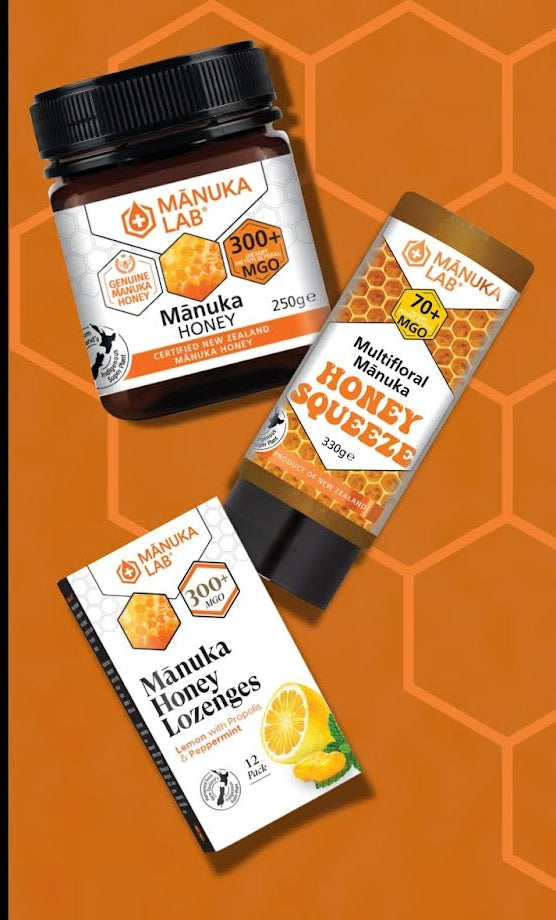

Scars are a common consequence of the body’s repair process following injuries such as minor cuts, minor abrasions, burns, or surgery. While the formation of scar tissue is a natural part of wound healing, many people look for ways to improve scar appearance. Increasingly, natural products like Mānuka honey are gaining attention for their potential to support scar healing and improve the condition of both the scar and the surrounding skin.
Known for its unique antibacterial properties and healing properties, Mānuka honey is not only used in traditional medicine but is now recognised by healthcare professionals for its role in wound care and skin regeneration. This article explores how Mānuka honey may support the management of scars, the science behind its use, how to apply it, and what to expect.
What Makes Mānuka Honey Different?
Mānuka honey is a type of monofloral honey produced by bees that gather nectar from the mānuka bush (Leptospermum scoparium) in New Zealand. What sets it apart from other honeys is its high concentration of methylglyoxal (MGO), a compound responsible for its antibacterial properties. These unique antibacterial properties are more stable and effective than those found in standard honey, making it particularly useful for skincare.
This honey also contains enzymes, amino acids, and antioxidants, which contribute to its well-documented healing properties. These properties are especially relevant when it comes to preventing or reducing the formation of excessive scar tissue and supporting healthy skin regeneration.
Understanding Scar Tissue and Scar Healing
When the skin is damaged, the body responds by producing collagen to repair the wound. The resulting scar tissue is structurally different from normal skin - denser and often less elastic. Scars can be raised, flat, or sunken, and may differ in colour from the surrounding skin.
Common types of scars:
-
Hypertrophic scars – raised and firm but limited to the area of injury
-
Keloid scars – raised and extend beyond the original wound site
-
Atrophic scars – sunken or pitted scars, often from acne
-
Contracture scars – typically result from burns, pulling the skin tight
-
Stretch marks – technically a form of scarring from skin stretching
The appearance of scars can vary depending on the type of injury, the depth of the wound, the individual’s skin type, and how well the area heals. Using appropriate care during the healing process can improve scar appearance and reduce the extent of long-term damage.
How Mānuka Honey Supports Scar Healing
Several key characteristics of Mānuka honey make it particularly effective in supporting the healing of wounds and improving scar tissue over time:
1. Antibacterial Properties Help Prevent Infection
Infected wounds often result in more noticeable scarring. Mānuka honey’s antibacterial properties, due to its high MGO content, help protect the skin from harmful bacteria. This is especially important during the early stages of healing when the skin barrier is compromised. By minimising the risk of infection, Mānuka honey encourages a cleaner, smoother healing process and limits the development of raised or discoloured scar tissue.
2. Healing Properties Promote Tissue Regeneration
Mānuka honey has been shown to stimulate the growth of fibroblasts and epithelial cells—both crucial for rebuilding damaged skin. These healing properties support the remodelling of scarred tissue, allowing for better alignment of collagen fibres and a smoother scar appearance.
This regenerative action is particularly useful for healing minor cuts, minor abrasions, and post-surgical wounds, especially when used early in the scar’s formation.
3. A Protective Barrier for Optimal Healing
One of Mānuka honey’s most beneficial effects is its ability to form a protective barrier over the wound site. This barrier locks in moisture while shielding the skin from external contaminants. A moist wound environment supports faster healing and has been shown to reduce the likelihood of thick or pigmented scarring. It also prevents the wound from drying out, which can lead to cracking and more pronounced scar tissue.
4. Anti-inflammatory Benefits for Surrounding Skin
Inflammation plays a critical role in how a scar forms. By reducing inflammation, Mānuka honey helps calm the skin and decrease redness and swelling around the injury. This not only improves the comfort of the healing site but also promotes even recovery of the surrounding skin, which contributes to a more uniform skin tone.
5. Antioxidant Support and Pigmentation Control
The antioxidants found in Mānuka honey help neutralise free radicals, reducing oxidative stress in the skin. This is especially helpful in addressing hyperpigmentation that may accompany scarring. Over time, consistent use of Mānuka honey may help fade dark marks and improve the overall appearance of the scar and nearby skin.
Ideal Uses for Mānuka Honey in Scar Management
Mānuka honey can be used on a variety of scar types, particularly during the active healing phase. It is most effective when applied soon after the skin has closed.
Effective for:
-
New surgical scars (post-stitch removal)
-
Healing acne scars
-
Burns and blistering wounds
-
Minor cuts and abrasions
-
Stretch marks
-
Skin tears and insect bites
It may also support the appearance of older scars over time by improving skin texture and hydration, although results tend to be more noticeable in newer scars.
How to Use Mānuka Honey for Scar Healing
To use Mānuka honey effectively for scar care:
-
Clean the skin gently with water or a mild cleanser.
-
Apply a thin layer of Mānuka honey directly onto the scar or healing skin.
-
Optionally, cover the area with a sterile dressing to keep it in place and maintain a moist environment.
-
Leave on for 30 minutes to several hours, depending on preference and comfort.
-
Rinse with warm water and pat dry.
Repeat daily or several times a week for best results. For facial scars, such as those from acne, you may prefer to use it as a spot treatment or combine it with gentle clay masks or natural exfoliants.
Choosing the Right Mānuka Honey
Not all honey is suitable for skincare. To ensure you’re getting a product with reliable antibacterial properties, select:
-
Mānuka honey with a clearly labelled MGO rating (ideally 250+ for topical use)
-
Products from trusted brands with traceability and quality testing
Avoid supermarket honey or blends that may not offer the therapeutic benefits necessary for scar healing.
Safety and Considerations
Mānuka honey is generally safe for topical use, but a few precautions apply:
-
Conduct a patch test before full application, especially for sensitive skin.
-
Avoid use on open wounds unless the honey is sterilised and designated as medical-grade.
-
Do not use if you have a known allergy to bees or bee products.
-
For persistent or problematic scars, consult a dermatologist or skin care professional.
Can It Be Used Alongside Other Treatments?
Yes. Mānuka honey can complement other scar treatments, including:
-
Silicone gels or patches
-
Vitamin C and niacinamide serums
-
Retinoid creams
-
Microneedling (under professional supervision)
When combining products, consider alternating their use to avoid overwhelming the skin. For example, use Mānuka honey at night and other treatments in the morning.
Conclusion: Is Mānuka Honey a Good Choice for Scar Care?
Mānuka honey offers a natural, science-backed approach to scar healing. Its antibacterial properties, anti-inflammatory benefits, and ability to form a protective barrier create ideal conditions for reducing the formation of scar tissue and improving the appearance of both new and older scars.
Whether you're treating minor cuts, minor abrasions, or more noticeable scars from surgery or acne, Mānuka honey can be a valuable part of your skincare routine. With consistent use and the right product, many users report visible improvement in scar appearance, skin hydration, and texture over time.
Where to buy the Highest Quality Mānuka Honey
Manuka Lab supplies premium, independently tested MGO-rated Mānuka honey, harvested exclusively from New Zealand. With full traceability from hive to jar, Manuka Lab ensures the highest quality honey for those seeking a trusted, natural option to support skin healing and scar care.
FAQs
How long should I use Mānuka honey on a scar?
Use it regularly for at least 3 to 6 weeks. Newer scars respond more quickly, but older scars may take longer to show results.
Can Mānuka honey lighten dark scars?
Yes, its antioxidant and anti-inflammatory properties may help reduce pigmentation associated with scarring.
Is it safe for daily use?
Yes, provided you’ve done a patch test and are not allergic, daily use is safe and beneficial for most people.
Can I use it on sensitive facial skin?
Yes, Mānuka honey is gentle enough for use on the face and is often used for acne-prone skin and healing acne scars.



